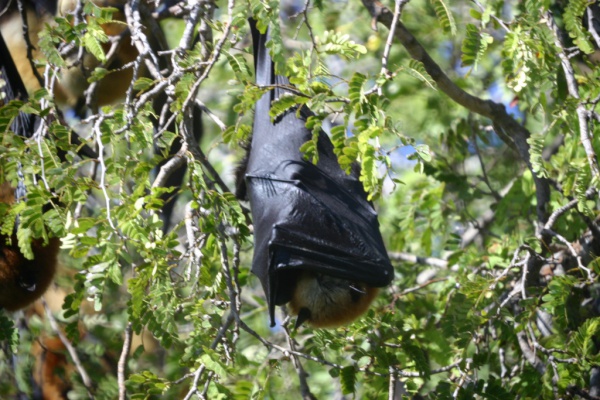Facts About Madagascan flying fox
The Madagascan flying fox, also known as the Madagascar fruit bat, is a fascinating species of megabat indigenous to Madagascar. These remarkable creatures are the largest bats on the island, featuring a body length of 23.5 to 27 cm, a wingspan spanning from 100 to 125 cm, and a weight ranging from 500 to 750 grams. Their fur is predominantly brown, adorned with striking golden to dark brown patches on their chest and shoulders. Both males and females exhibit similar appearances.
These bats flourish in subtropical and tropical moist lowland forests, where they primarily consume figs, fruits, flowers, and leaves. During the day, they roost in large trees, forming colonies that can comprise up to 1,000 individuals. The Madagascan flying fox has a diverse diet that includes fruit juice, seeds, leaves, flowers, and nectar. They play a crucial role in their ecosystem by aiding in seed dispersal and pollinating certain tree species, such as the kapok tree (Ceiba pentandra).
Although these bats are widespread across Madagascar, they are notably absent from the central highland region. Regrettably, the Madagascan flying fox faces significant threats, leading the International Union for Conservation of Nature (IUCN) to classify them as "Vulnerable" on their Red List of Threatened Species. The primary cause of their declining numbers is hunting for bushmeat, which is regulated by law and allowed only between May and August. However, illegal hunting persists and remains a major threat. Additionally, habitat loss due to deforestation for agriculture poses a serious risk to their survival.
Certain protected areas in Madagascar provide a haven for these bats, offering them some level of protection from hunting. However, enhanced conservation efforts are imperative to ensure the survival of the Madagascan flying fox population. By addressing the issues of hunting and habitat loss, we can help safeguard these extraordinary creatures and the vital roles they play in their ecosystem.
